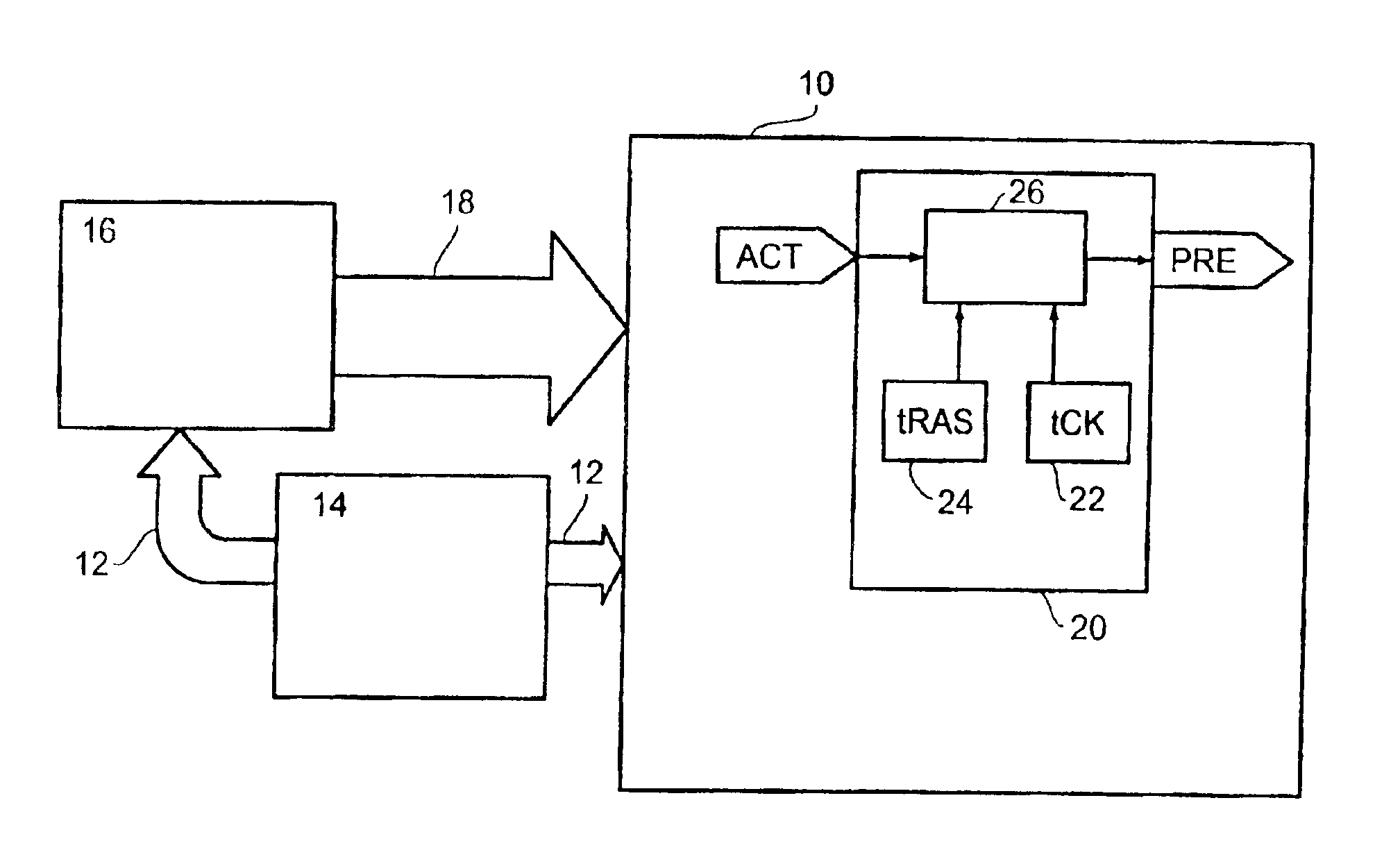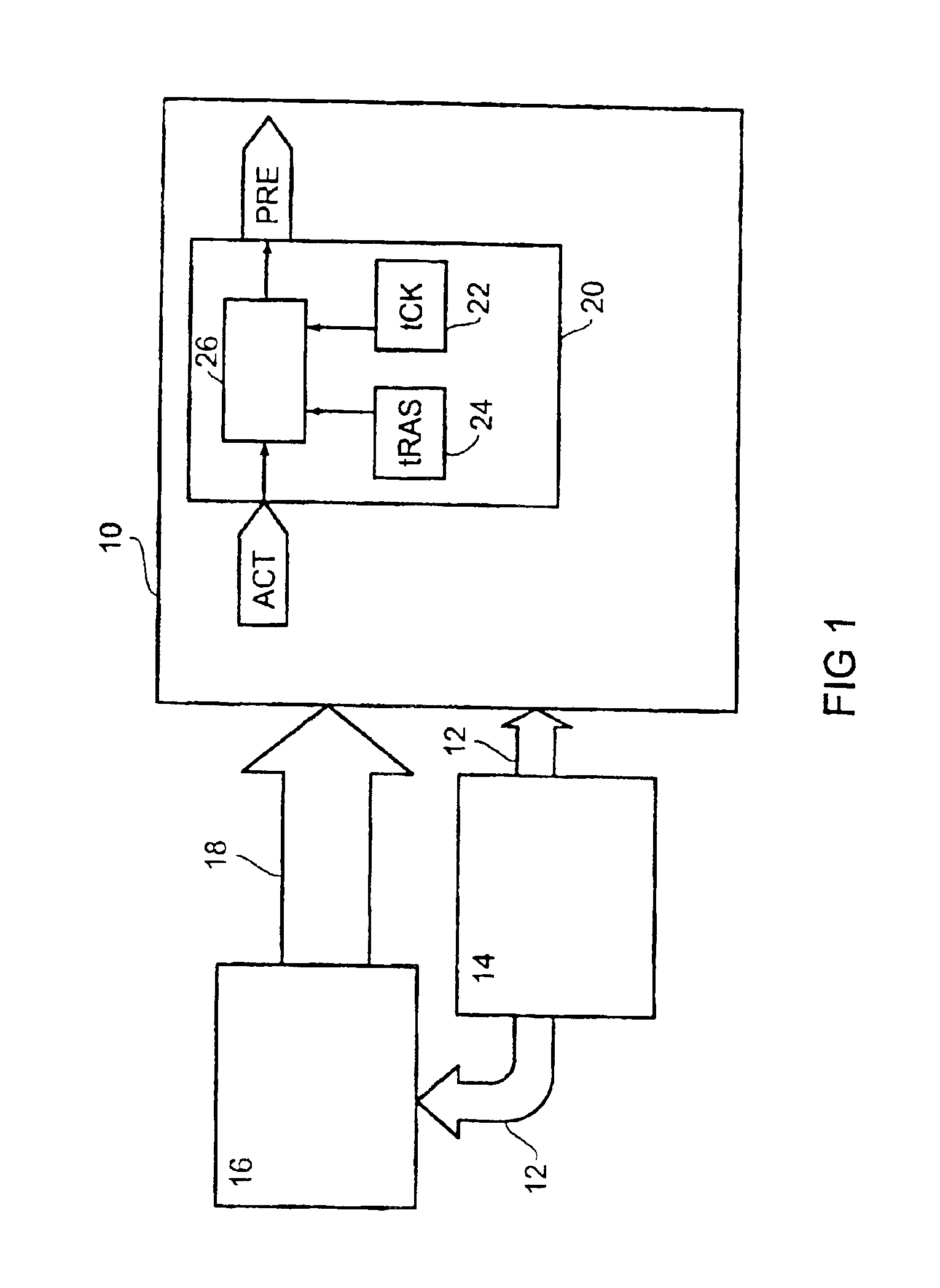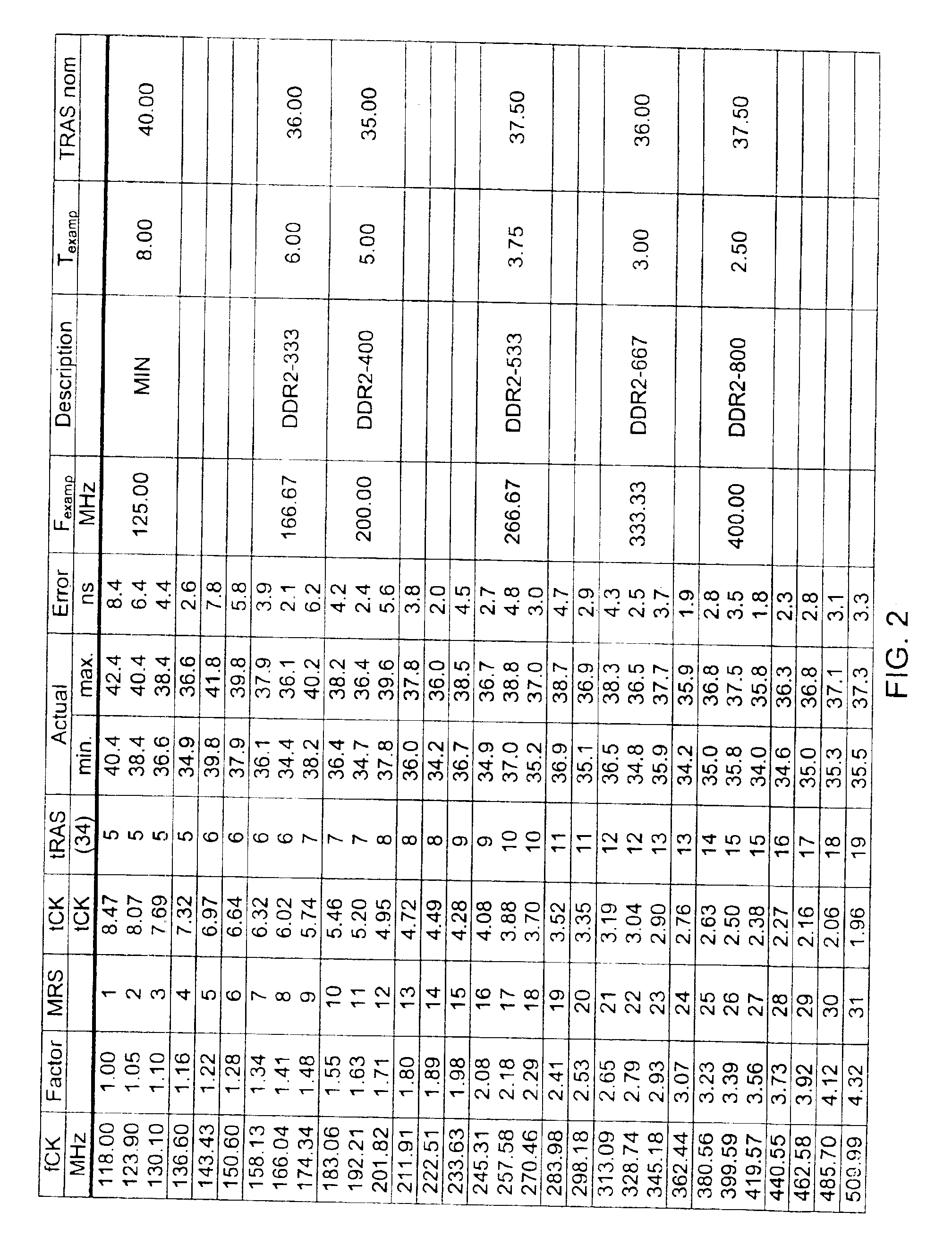Circuit element with timing control
a technology of circuit elements and timing control, applied in the field of circuit elements with timing control, can solve the problems of inability to meet the needs of standby power, inability to adjust the timing of the circuit element,
- Summary
- Abstract
- Description
- Claims
- Application Information
AI Technical Summary
Benefits of technology
Problems solved by technology
Method used
Image
Examples
Embodiment Construction
[0021]FIG. 1 shows a memory element 10, e.g. a DRAM element. The memory element 10 might also take the more specialized form of a DDR-SDRAM element (DDR SDRAM=double data rate synchronous dynamic random access memory).
[0022]The memory element 10 receives a clock signal 12 from a clock generator 14. The clock signal represents an external clock signal and possesses a certain clock frequency. Typical clock frequencies lie in a range between 83 MHz and 167 MHz. The clock generator 14 also supplies the clock signal 12 to an external control 16. The control 16 is connected to the memory element 10 via a signal bus 18, which is usually called the CMD bus. The memory element 10 can be a memory module with a plurality of memory chips on it or a single memory chip.
[0023]The control 16 communicates with the memory element 10 via the signal bus 18 so as to transfer control signals and data signals to the memory element 10 and to receive them from it.
[0024]So far the structure of the memory ele...
PUM
 Login to View More
Login to View More Abstract
Description
Claims
Application Information
 Login to View More
Login to View More - R&D
- Intellectual Property
- Life Sciences
- Materials
- Tech Scout
- Unparalleled Data Quality
- Higher Quality Content
- 60% Fewer Hallucinations
Browse by: Latest US Patents, China's latest patents, Technical Efficacy Thesaurus, Application Domain, Technology Topic, Popular Technical Reports.
© 2025 PatSnap. All rights reserved.Legal|Privacy policy|Modern Slavery Act Transparency Statement|Sitemap|About US| Contact US: help@patsnap.com



